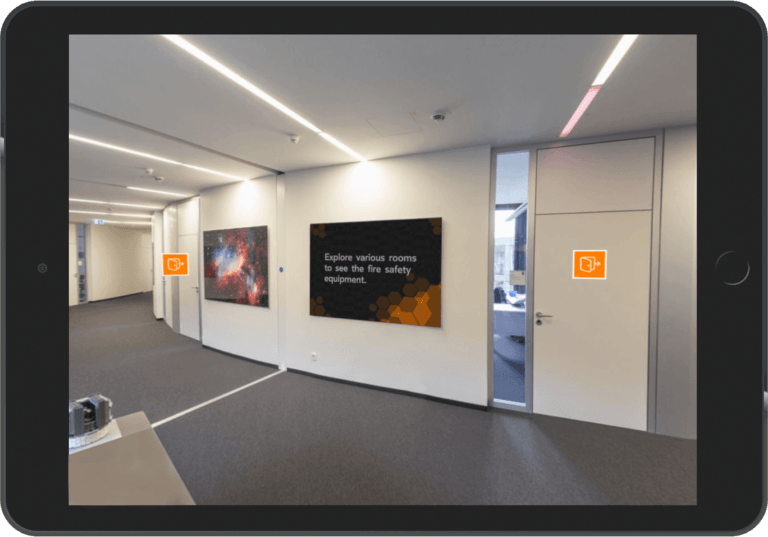Over the past two years, corporations have been developing and implementing Virtual Reality training solutions. In this article, I will be talking about how we implemented Virtual Reality in corporate training.

A Case Study On Safety Training: How To Use Virtual Reality In eLearning
I was long thinking of implementing Virtual Reality in one of the eLearning courses for our customers. When we got an opportunity to implement it, we didn’t miss the chance. This article is all about how we created a Virtual Reality (VR) experience for a customer who wanted to train their employees in a fire drill.
Before we deep-dive into our journey, I would like to inform you about a few aspects of Virtual Reality in eLearningand its advantages in corporate learning. So, let’s start with the basic.
Overview Of Virtual Reality
Virtual Reality is a practice or a technique of simulating parts of our real world using computers and specially designed equipment. Technically, “Virtual Reality is a three-dimensional, computer-generated environment which can be explored and interacted with by a person”. (Source: creostorm) That person is then immersed in a virtual environment. The person can also perform actions while in the part of that reality.
Now the question arises, how does Virtual Reality (VR) technology influence corporate training?
Corporate Training With Virtual Reality (VR)
It’s no secret that an increasing number of businesses are turning to Virtual Reality in eLearning for employee training. Virtual Reality (VR) is normally implemented in situations which can be risky or hazardous. Instead of conducting drills, companies can help employees expose to concepts such as emergency response to a hazardous situation – like fire or flood or a tornado alarm –through a VR based module. Further, insurance companies can benefit from Virtual Reality in eLearning by using it to accurately assess property damages caused due to tornadoes, hailstorms or floods.
Let’s have a look at a case study for this.
Case Study: Fire Safety Training
One of our customers approached us to develop a course on fire safety for their company. The intention of the customer was to educate their employees on the safe use of fire exit facilities in one of their buildings in case of fire disaster, and also use the right equipment to fight against fire if needed. This eLearning course with Virtual Reality (VR) was also to be used to train employees at other facilities of customers, to create more awareness, and to equip them to react more effectively.
The customer requested for a better way to train their employees on how to evacuate the floor safely and provided them with the general guideline procedure that had to be followed. They also wanted the training to be rolled out for PC, tablets, and smartphones.
After hearing out the customer requirements, we began evaluating the solutions that could be used for training. We suggested a solution, that of using Virtual Reality in eLearning, as that would give the employees a realistic feel for the situation such as a fire emergency. We used the right technology to ensure training courses can be taken on PCs, tablets, smartphones and, most importantly, through the use of VR goggles wherever they are available at the customer’s office locations.
We used a 360° camera to take pictures of the office floor and the fire exit points. The storyboard and the content were curated accordingly… We, then, developed a simulation of the building floors and offices. For this simulation, we added a few hotspots to show how the employees can navigate in case of a fire emergency. This, we believe, would leave a major learning impact on the employees.
The eLearning course with Virtual Reality (VR) allows employees to choose their exit path from the building. Employees can decide to fight the fire, but they must first find the fire extinguishers, water sprinklers, and fire alarms in their workplace – which is, by the way, not an easy task when the room is filled with fire.
The employees need to know where the fire extinguishers are placed and the associated information. They also need to answer a few questions. Further, they have to find an exit that is nearest so that they can reach the assembly point safely.
After the course was over, we told the employees to sit back and allowed the course to seep in. This was known as the moment of contemplation, wherein the employee gets to recall and analyze the entire course. After that we asked for their feedback. Most of the employees said the experience with VR was quite exciting and useful, and helped them in experiencing a fire evacuation drill in real time.
Thus, the eLearning course with Virtual Reality helped learners understand the concept better.
Here is a screenshot of the course:




Conclusion
This was just an example of countless use cases for VR training, all of which support the transformation in how organizations train, and help their employees learn better. As is the case with any transformational tool, an investment is required, but that commitment can pay big dividends when VR is implemented correctly.
Suggested further reading:
New VR is new way of looking at VR with 360 based photography and developing platforms that can run VR seamlessly. There are quite a few players now who are developing VR in this way. I think Captivate offers VR now with 360 based photographs. New VR is more friendly to digital learning. the earlier VR solutions were quite expensive.
You must be logged in to post a comment.









